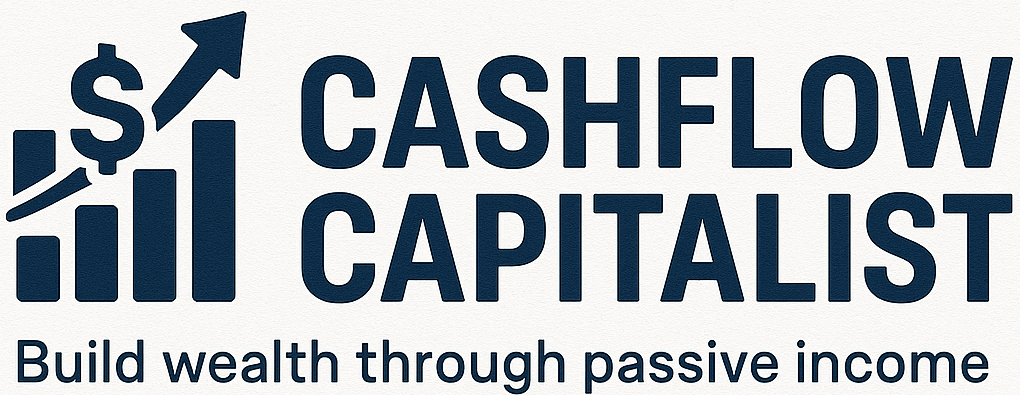How to Build a Balanced TFSA for 2025: The Perfect Mix of Stocks, ETFs, REITs, and Cash
In Canada, a Tax-Free Savings Account (TFSA) is a key tool for reaching financial goals. It’s vital to have a diversified TFSA portfolio to succeed in any market. As we near 2025, reviewing your investment plan is key to match your risk level and goals.
A good TFSA mix includes stocks, ETFs, REITs, and cash for growth, income, and stability. REITs offer steady income and diversification. Knowing the strengths of each investment helps Canadians build a tax-efficient portfolio for better returns.

Key Takeaways
- Understand the importance of diversification in a TFSA portfolio.
- Learn how to allocate assets effectively for long-term growth.
- Discover the benefits of using REITs for regular income.
- Explore the role of ETFs in a diversified investment strategy.
- Consider the impact of risk tolerance on your TFSA investments.
Understanding the TFSA Advantage for Canadian Investors
Canadian investors often choose Tax-Free Savings Accounts (TFSAs) to grow their savings. TFSAs are great because they are flexible, tax-efficient, and can grow a lot. This makes them a top choice for many investors.
TFSA Contribution Limits for 2025
The 2024 TFSA contribution limit is $7,000. It’s key to know the 2025 limit too. The exact 2025 limit might not be out yet. But knowing the 2024 limit helps with planning.
For the latest on 2025, check the Canada Revenue Agency (CRA) website. Or talk to a financial advisor.
Tax Benefits of TFSA Investing in Canada
One big plus of TFSAs is they grow tax-free. You put in after-tax money, but the growth and withdrawals are tax-free. This is great for keeping taxes low.
As an article on the best Canadian ETFs for TFSAs and RRSPs points out, TFSAs are key for a well-rounded portfolio.

The Power of Compounding in a Tax-Free Environment
Compounding is a big plus of TFSAs. Tax-free growth means more money to grow, leading to big gains over time. Plus, you can take out and put back money, making TFSAs very powerful.
By using a TFSA’s tax-free environment, investors can boost their returns. This helps reach financial goals faster.
Assessing Your Investment Goals and Risk Tolerance
Starting a good TFSA strategy means knowing your investment goals and risk level. You need to think about your financial aims and how much risk you can handle.
Defining Your TFSA Investment Objectives
First, figure out what you want from your TFSA. Are you saving for retirement, a house, or your kids’ education? Your goals will shape your investment choices.
Understanding Different Risk Profiles
People usually fall into three risk groups: conservative, moderate, or aggressive. Knowing your risk level is key to smart investing.
Conservative Investor Profile
Conservative investors focus on keeping their money safe. They often choose low-risk options like bonds and stocks that pay dividends.
Moderate Investor Profile
Moderate investors aim for a mix of safety and growth. They spread their investments across different types of assets.
Aggressive Investor Profile
Aggressive investors are ready to take big risks for bigger rewards. They often go for stocks that grow fast and other risky investments.

How Age and Time Horizon Impact Your TFSA Strategy
Your age and how long you have to invest affect your TFSA plan. Younger people can usually handle more risk. Older investors might prefer safer choices.
| Age Group | Typical Risk Profile | Investment Strategy |
|---|---|---|
| 20-30 | Aggressive | High equity allocation |
| 30-50 | Moderate | Balanced portfolio |
| 50+ | Conservative | Higher fixed income allocation |
Understanding your goals, risk level, and time frame helps you craft a TFSA plan that fits your financial goals.
Building a Balanced TFSA Portfolio: Core Components
A well-diversified TFSA is key to a successful investment plan. It needs a mix of asset classes for balance. This mix should manage risk and aim for good returns.
Equity Investments: Growth Engines for Your TFSA
Equity investments are vital for growth in a TFSA. You can pick between Canadian stocks and ETFs. Each has its own benefits.
Individual Canadian Stocks vs. ETFs
Individual stocks give direct company ownership and can offer high returns. But, they can be risky. ETFs, by contrast, spread out investments, lowering risk. A financial expert notes, “ETFs are a great way to gain broad market exposure with a single investment.”
Canadian, U.S., and International Exposure
A balanced TFSA includes Canadian, U.S., and international equities. This mix helps against market ups and downs. For example, U.S. stocks can be accessed through ETFs like the Vanguard S&P 500 ETF.

Fixed Income: Stability and Yield
Fixed income investments offer stability and regular income. They balance out the ups and downs of stocks.
Bonds and Bond ETFs in a Rising Rate Environment
Bonds and bond ETFs are affected by interest rates. In a rising rate environment, short-term bonds or ETFs are better. They help avoid interest rate risks.
GICs and High-Interest Savings Products
GICs and high-interest savings accounts are low-risk. They offer fixed returns, perfect for cautious investors or emergency funds in a TFSA.
Alternative Investments: REITs and Covered Call ETFs
Alternative investments like REITs and covered call ETFs add diversity and income.
REITs let investors in real estate without managing properties, providing rental income. Covered call ETFs make money by selling call options on stocks.
Cash Holdings: Maintaining Liquidity and Opportunity Funds
Keeping some cash in a TFSA is vital for quick access and seizing opportunities during downturns.
A financial advisor once said, ”
Cash is king during market volatility, allowing investors to capitalize on opportunities.
” Having cash or cash equivalents in the TFSA is ready for market changes.
Diversification Strategies for a Resilient TFSA
To get the most out of your TFSA, diversifying is key. A well-diversified TFSA helps you stay stable over time. It lets you handle different market situations with confidence.
Geographic Diversification: Beyond Canadian Borders
Investing in international markets can boost your TFSA’s strength. Adding global stocks and ETFs opens up new growth chances. For example, look into Canadian ETFs that cover international markets.

Sector Diversification: Avoiding Concentration Risk
Spreading your investments across different sectors is important. This way, you avoid being too tied to one area. For instance, investing in tech, healthcare, and finance can keep your portfolio stable.
Asset Class Diversification: Correlation Benefits
Mixing different investment types, like stocks and bonds, can smooth out returns. This mix helps reduce risk. For example, bonds might do well when stocks fall, protecting your portfolio.
Practical Examples of Well-Diversified TFSAs
A good TFSA mix could include Canadian and international stocks, bonds, and REITs. For example, you might put 40% in Canadian stocks, 30% in international ones, 20% in bonds, and 10% in REITs. Here’s a table showing this:
| Asset Class | Allocation Percentage |
|---|---|
| Canadian Equities | 40% |
| International Equities | 30% |
| Fixed Income | 20% |
| REITs | 10% |
By using these strategies, your TFSA can better handle market ups and downs. This helps you reach your long-term financial goals.
Optimal Asset Allocation Models for Different Investor Types
Investors looking to improve their TFSA portfolios need to pick the right asset mix. This mix should match their risk level and goals. The right combination can boost long-term gains and reduce losses.
Conservative TFSA Portfolio (40% Equities, 50% Fixed Income, 10% Cash)
A conservative TFSA is best for those who don’t like taking risks or are close to retirement. It focuses on keeping things stable and earning income, not on big gains.
Example Portfolio with XEQT, ZAG, and CASH.TO
For a safe choice, put 40% in equities with XEQT, a Canadian equity ETF. Use ZAG, a Canadian bond ETF, for 50% of fixed income. Keep 10% in cash or CASH.TO.
| Asset Class | Allocation | Example ETF |
|---|---|---|
| Equities | 40% | XEQT |
| Fixed Income | 50% | ZAG |
| Cash | 10% | CASH.TO |
Balanced TFSA Portfolio (60% Equities, 30% Fixed Income, 10% Alternatives)
A balanced TFSA is good for those who want a mix of risk and stability. It balances growth with safety.
Example Portfolio with XGRO, ZRE, and Bond ETFs
For a balanced TFSA, put 60% in equities with XGRO, a growth ETF. Use 30% for fixed income with bond ETFs. Add 10% with ZRE, a REIT ETF.

Growth-Oriented TFSA Portfolio (80% Equities, 10% Fixed Income, 10% Alternatives)
Growth-focused investors might choose a more aggressive TFSA. This mix includes more equities and alternatives for bigger returns.
Example Portfolio with VEQT, HVOI, and Dividend Stocks
For growth, invest 80% in equities with VEQT, a global equity ETF. Use 10% for alternatives like HVOI and 10% in dividend stocks.
How to Implement Your Chosen Allocation Strategy
To set up your TFSA, first check your current portfolio and see what changes you need. You might want to talk to a financial advisor or use online tools to find the best ETF mix. Remember to rebalance your portfolio regularly to keep it aligned with your goals. For more tips on ETF investing, check out Cashflow Capitalist.
Conclusion: Your Path to TFSA Success in 2025 and Beyond
To succeed with your TFSA, you need a solid TFSA investing plan 2025. It should mix stocks, ETFs, REITs, and cash. Knowing your goals and how much risk you can take helps you build a strong portfolio for the long run.
Having a diverse TFSA portfolio is essential for long-term investing. Spread your money across different types of investments to reduce risk and increase gains. Keep checking and tweaking your portfolio to make sure it matches your goals.
By using the tips from this article, you can make your TFSA work for your financial dreams. With a good plan, you’re on the path to TFSA success and a secure financial future.
FAQ
What is a TFSA, and how does it work?
A Tax-Free Savings Account (TFSA) lets Canadians save money without paying taxes on the growth. You put in money, and it grows without tax. When you take it out, it’s tax-free too.
What are the TFSA contribution limits for 2025?
The Canada Revenue Agency (CRA) will tell us the 2025 TFSA limit. Check their website for the latest on how much you can contribute.
What are the benefits of investing in a TFSA?
TFSAs grow your money without taxes, which is great for saving long-term. You can also take out your money anytime without losing any to taxes.
How do I determine my risk tolerance for TFSA investing?
Think about your age, savings goals, and how you feel about market ups and downs. If you’re young and want to grow your money fast, you might choose riskier investments. Older folks might prefer safer options.
What is the ideal asset allocation for a TFSA?
The right mix of investments depends on your goals and how much risk you’re okay with. A balanced portfolio might include stocks, bonds, and cash. ETFs can help you spread your investments.
How can I diversify my TFSA portfolio?
Spread your investments across different types, like stocks, bonds, and real estate. Using a mix of individual stocks, ETFs, and other products can help.
What are some examples of TFSA investment products?
You can invest in ETFs like XEQT, ZAG, and VEQT. Stocks, REITs, and high-interest savings are also good options. Even covered call ETFs and other alternatives are worth considering.
How often should I review and rebalance my TFSA portfolio?
Check your TFSA every 6-12 months to make sure it matches your goals and risk level. You might need to rebalance to keep your investments in line.
Can I use my TFSA for long-term retirement savings?
Yes, TFSAs are great for retirement savings. They offer tax-free growth and withdrawals, which is key for a secure retirement.
How can I maximize my TFSA contributions?
Max out your contributions each year and carry forward unused room. Avoid taking out money that could reduce your contribution room.




